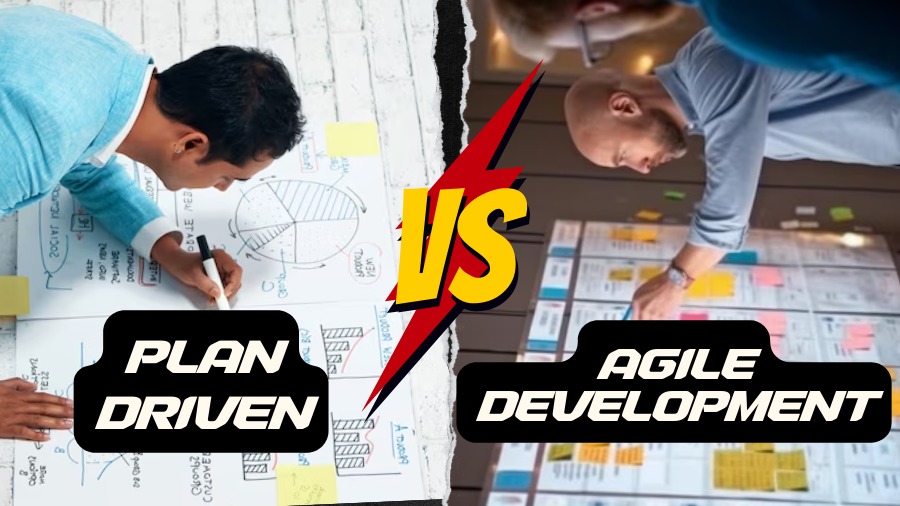Charting Your Development Course: Difference between plan driven and agile development
In the ever-evolving world of software development, choosing the right methodology is crucial for project success. Two prominent approaches – difference between plan driven and agile development – stand out, each offering distinct advantages and ideal scenarios. This blog delves into the core differences between these methodologies, empowering you to make an informed decision for your next project.
Demystifying Plan-Driven Development:

Plan-driven development, also known as waterfall model, follows a sequential and linear approach. Here’s a breakdown of its key characteristics:
- Detailed upfront planning: Comprehensive planning lays the groundwork for the entire project, outlining features, timelines, and resource allocation.
- Phased approach: The project progresses through distinct, well-defined phases such as requirements gathering, design, development, testing, and deployment.
- Limited flexibility: Changes are discouraged during later stages as they can significantly impact the project scope, timeline, and budget.
- Emphasis on documentation: Detailed documentation acts as a blueprint, outlining project specifics and minimizing ambiguity.
Ideal Situations for Plan-Driven Development:
While sometimes perceived as rigid, plan-driven development excels in specific scenarios:
- Projects with well-defined and unchanging requirements: When project requirements are clear and unlikely to evolve, the structured approach ensures efficient execution.
- Long-term, large-scale projects: For complex projects with strict deadlines and resource constraints, the upfront planning fosters predictability and control.
- Highly regulated industries: In sectors with stringent compliance regulations, the documented approach ensures adherence to established standards.
Embracing Agility: Understanding Agile Development:

Agile development champions an iterative and incremental approach. Key characteristics include:
- Focus on short iterations: The project progresses in sprints, delivering working software increments within short timeframes (typically 2-4 weeks).
- Continuous adaptation: Continuous feedback from stakeholders and the ability to adapt to changing priorities are central to the process.
- Collaborative environment: Emphasis on open communication, collaboration, and self-organizing teams fosters a dynamic and responsive environment.
- Reduced emphasis on documentation: While documentation exists, it is prioritized based on evolving needs, focusing on essentials over exhaustive details.
Ideal Situations for Agile Development:
Agile methodologies thrive in dynamic environments:
- Projects with evolving requirements: When requirements are fluid and prone to change, agile allows for continuous adaptation and improvement.
- Projects with short deadlines and tight budgets: Delivering functional features in short sprints enables early feedback and reduces risk of late-stage rework.
- Uncertain and innovative projects: When the project scope is less defined or involves exploring new technologies, agile fosters flexibility and experimentation.
The Choice is Yours: Finding the Perfect Fit
Choosing between plan-driven and agile development hinges on your specific project context. Consider these factors:
- Project complexity and size: Complex projects might benefit from initial planning, while smaller, more dynamic projects might thrive with agile methods.
- Requirement stability: If requirements are likely to change throughout the project, an agile approach allows for easier adaptation.
- Team structure and culture: Agile methodologies often require self-organizing teams with strong communication skills.
Beyond the Divide: A Hybrid Approach
In practice, many projects adopt a hybrid approach, blending elements of both methodologies. This allows for initial planning to provide a general direction, while embracing iterative development and adaptation throughout the project lifecycle.
Ultimately, the success of any development methodology lies in understanding its core principles and tailoring its application to your specific project needs. By carefully considering the factors outlined above, you can embark on your software development journey with the right tools and mindset for success.
You may be interested in:
Localization Testing: Bridging Gaps in a Global Digital Landscape
A Field Guide to Essential Tools and Technologies

